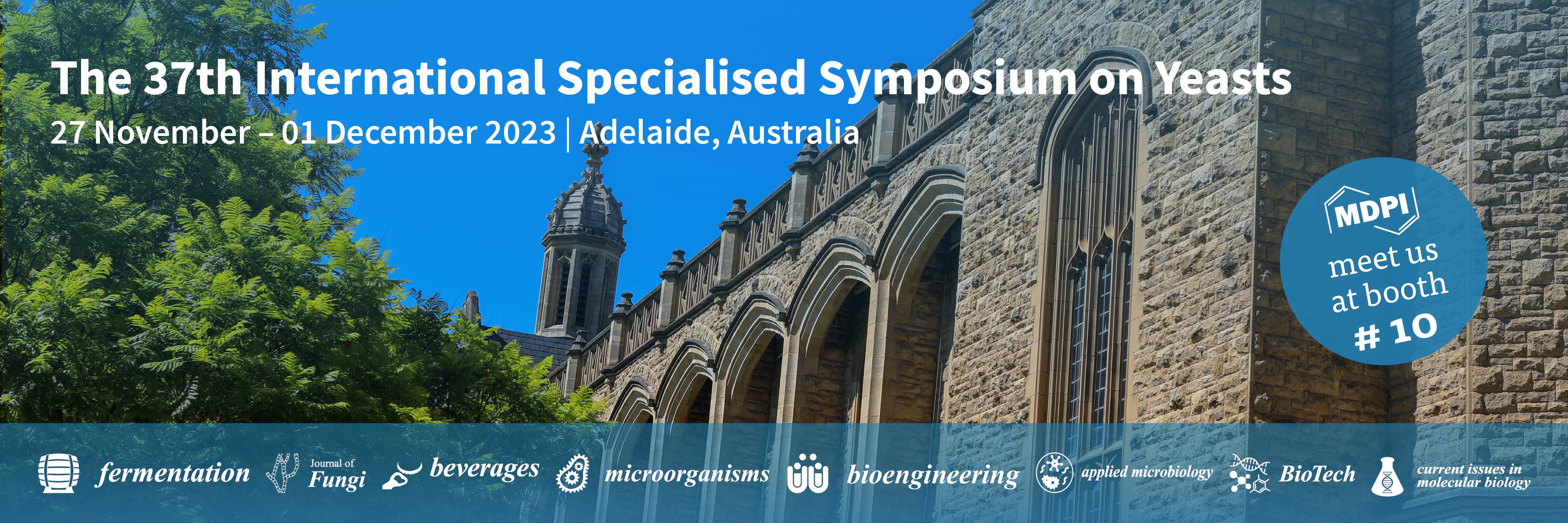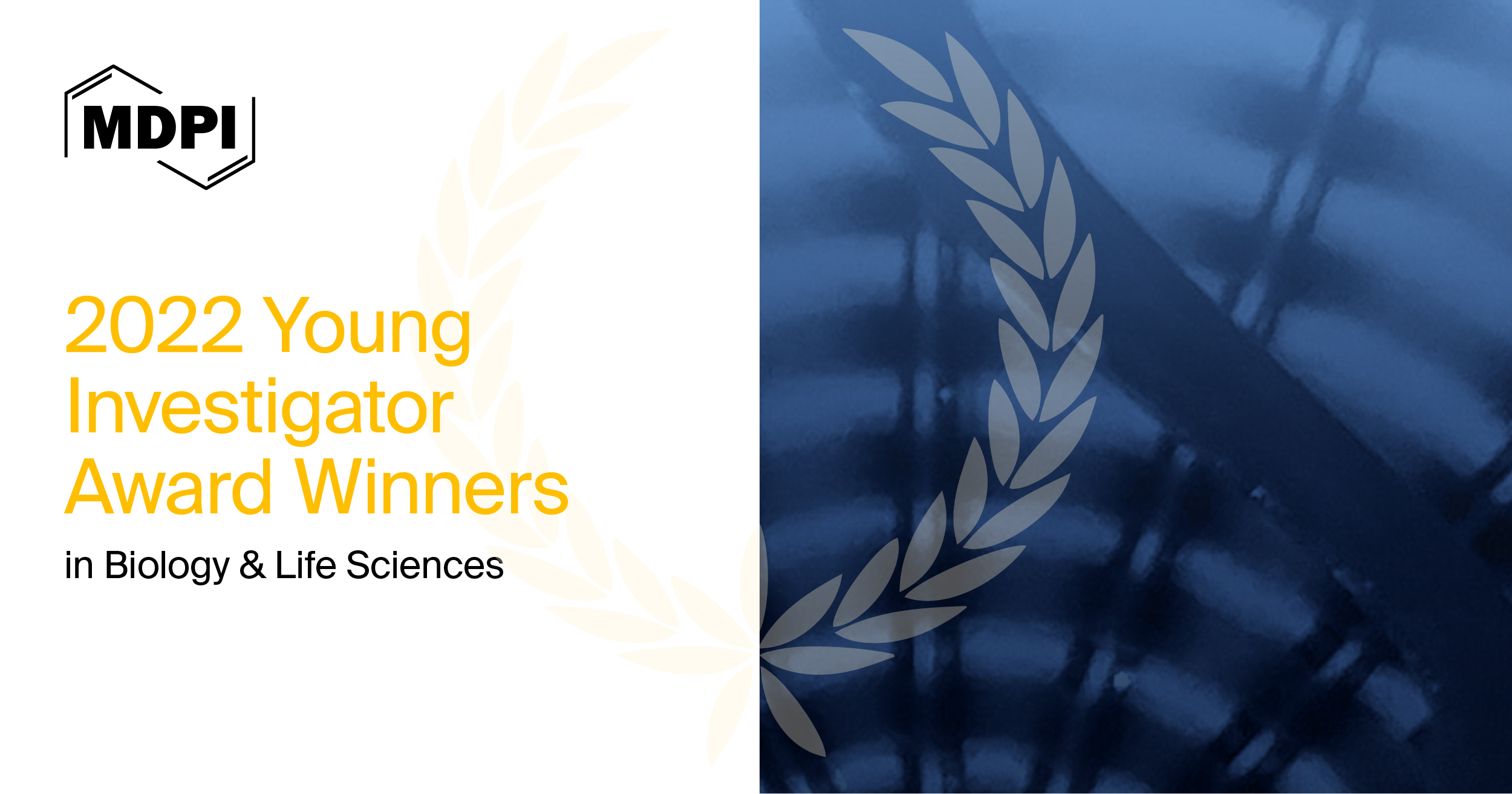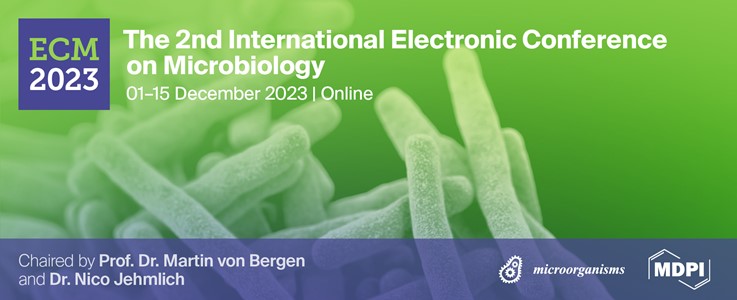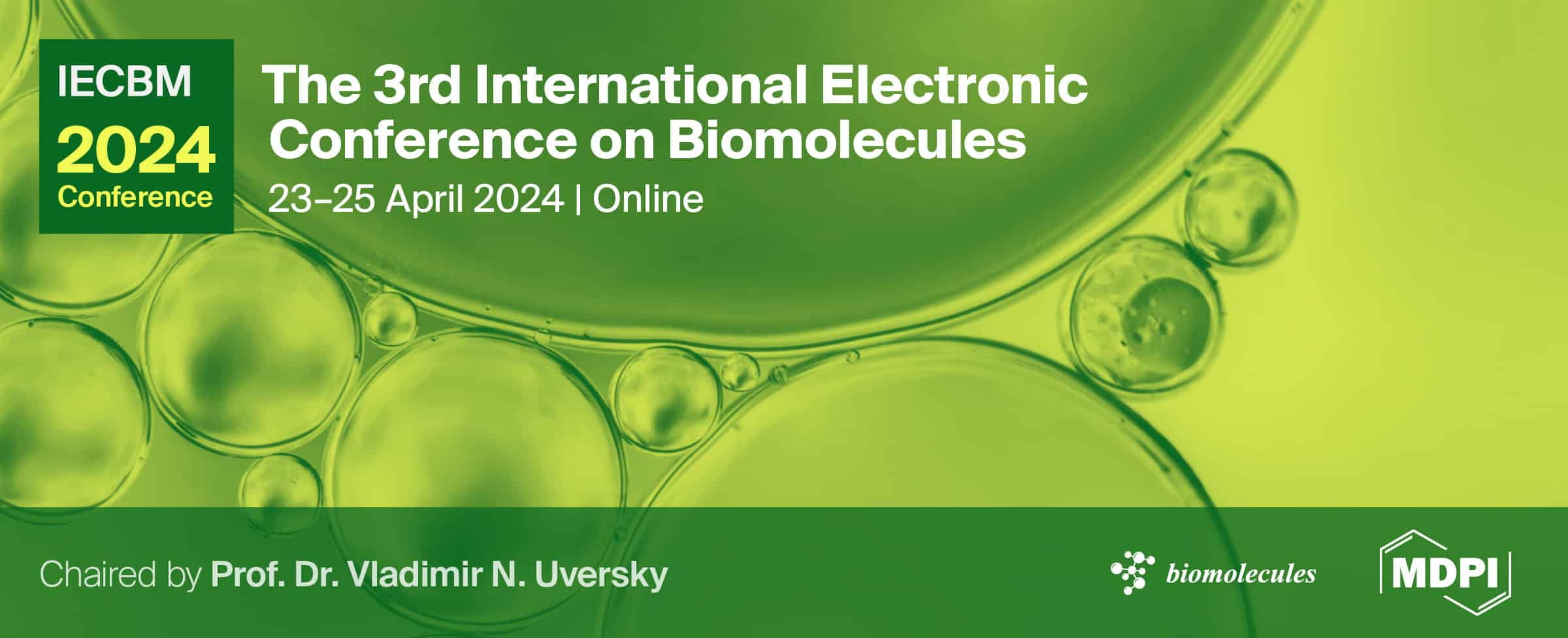-
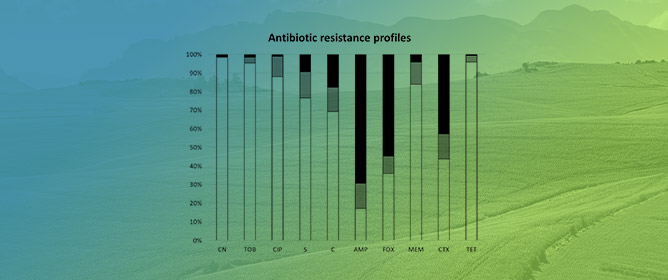 Identification and Characterization of Antibiotic-Resistant, Gram-Negative Bacteria Isolated from Korean Fresh Produce and Agricultural Environment
Identification and Characterization of Antibiotic-Resistant, Gram-Negative Bacteria Isolated from Korean Fresh Produce and Agricultural Environment -
 Insights into the Biology of Leucocytozoon Species (Haemosporida, Leucocytozoidae): Why Is There Slow Research Progress on Agents of Leucocytozoonosis?
Insights into the Biology of Leucocytozoon Species (Haemosporida, Leucocytozoidae): Why Is There Slow Research Progress on Agents of Leucocytozoonosis? -
 The Skin Microbiome: Current Techniques, Challenges, and Future Directions
The Skin Microbiome: Current Techniques, Challenges, and Future Directions
Journal Description
Microorganisms
Microorganisms
is a scientific, peer-reviewed, open access journal of microbiology, published monthly online by MDPI. The Hellenic Society Mikrobiokosmos (MBK), the Spanish Society for Nitrogen Fixation (SEFIN) and the Society for Microbial Ecology and Disease (SOMED) are affiliated with the Microorganisms, and their members receive a discount on the article processing charges.
- Open Access— free for readers, with article processing charges (APC) paid by authors or their institutions.
- High Visibility: indexed within Scopus, SCIE (Web of Science), PubMed, PMC, PubAg, CAPlus / SciFinder, AGRIS, and other databases.
- Journal Rank: JCR - Q2 (Microbiology) / CiteScore - Q2 (Microbiology (medical))
- Rapid Publication: manuscripts are peer-reviewed and a first decision is provided to authors approximately 14.5 days after submission; acceptance to publication is undertaken in 2.7 days (median values for papers published in this journal in the first half of 2023).
- Recognition of Reviewers: reviewers who provide timely, thorough peer-review reports receive vouchers entitling them to a discount on the APC of their next publication in any MDPI journal, in appreciation of the work done.
- Testimonials: See what our editors and authors say about the Microorganisms.
- Companion journal: Applied Microbiology.
Impact Factor:
4.5 (2022);
5-Year Impact Factor:
4.8 (2022)
Latest Articles
Nigrospora oryzae Causing Leaf Spot Disease on Chrysanthemum × morifolium Ramat and Screening of Its Potential Antagonistic Bacteria
Microorganisms 2023, 11(9), 2224; https://doi.org/10.3390/microorganisms11092224 (registering DOI) - 01 Sep 2023
Abstract
Chrysanthemum × morifolium Ramat. is a famous perennial herb with medicinal, edible, and ornamental purposes, but the occurrence of plant diseases can reduce its value. A serious disease that caused leaf spots in C. morifolium appeared in 2022 in Tongxiang City, Zhejiang Province,
[...] Read more.
Chrysanthemum × morifolium Ramat. is a famous perennial herb with medicinal, edible, and ornamental purposes, but the occurrence of plant diseases can reduce its value. A serious disease that caused leaf spots in C. morifolium appeared in 2022 in Tongxiang City, Zhejiang Province, China. The C. morifolium leaves with brown spots were collected and used for pathogen isolation. By completing Koch’s postulates, it was proven that the isolate had pathogenicity to infect C. morifolium. It was determined that the pathogen isolated from chrysanthemum leaves was Nigrospora oryzae, through morphology and a multilocus sequence analysis method using a combination of the internal transcribed spacer gene (ITS), beta-tubulin gene (TUB2), and translation elongation factor 1-alpha gene (TEF1-α). This is the first report of C. morifolium disease caused by N. oryzae in the world. Through dual culture assay on PDA plates, 12 strains of bacteria with antagonistic effects were selected from 231 strains from the C. morifolium phyllosphere, among which Bacillus siamensis D65 had the best inhibitory effect on N. oryzae growth. In addition, the components of a strain D65 fermentation broth were profiled by SPME-GC-Q-TOF analysis, providing a foundation for further application and research of biological control.
Full article
(This article belongs to the Special Issue Plant-Microbe Interaction State-of-the-Art Research in China)
►
Show Figures
Open AccessEditorial
SARS-CoV-2 Induced Herpes Virus Reactivations and Related Implications in Oncohematology: When Lymphocytopenia Sets in and Immunosurveillance Drops Out
by
, , , , , and
Microorganisms 2023, 11(9), 2223; https://doi.org/10.3390/microorganisms11092223 (registering DOI) - 01 Sep 2023
Abstract
The severe acute respiratory syndrome, coronavirus 2 (SARS-CoV-2), is a positive-sense single-stranded ribonucleic acid (RNA) virus contagious in humans and responsible for the ongoing coronavirus disease 2019 (COVID-19) [...]
Full article
(This article belongs to the Special Issue Cytohistological Hallmarks of SARS-CoV-2 Infection in Humans)
►▼
Show Figures
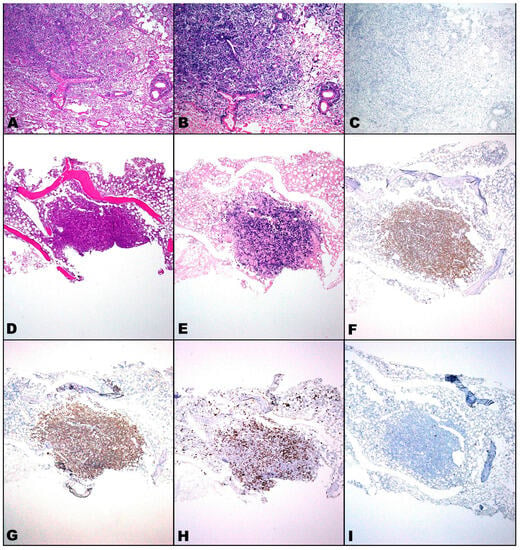
Figure 1
Open AccessReview
Bacteriophages as Potential Clinical Immune Modulators
Microorganisms 2023, 11(9), 2222; https://doi.org/10.3390/microorganisms11092222 (registering DOI) - 01 Sep 2023
Abstract
Bacteriophages (phages for short) are bacteria-specific viruses that have been drawing attention when it comes to countering the ever-growing antibiotic bacterial resistance, and are being seen as one of the most promising technologies against multi-antibiotic-resistant bacteria. Although bacteriophages are commonly regarded only as
[...] Read more.
Bacteriophages (phages for short) are bacteria-specific viruses that have been drawing attention when it comes to countering the ever-growing antibiotic bacterial resistance, and are being seen as one of the most promising technologies against multi-antibiotic-resistant bacteria. Although bacteriophages are commonly regarded only as anti-bacterial objects unable to directly interact with eukaryotic cell metabolism, and standing only as indirect body homeostasis modulators by interacting with the microbiome, a increasing quantity of evidence has indicated that bacteriophages can directly affect cells and structures other than bacteria in both in vitro and in vivo applications, influencing the behavior of tissues and immune systems. In sight of this new range of applications, several authors have expressed enthusiasm in phage therapy as direct modulators of eukaryotic cells for clinical usage, highlighting the need for further investigations covering the pharmacology of these new “eukaryotic-viruses”, as even harmful interactions with eukaryotic cells were detected after phage therapy. The present review aims to cover and highlight mechanisms through which bacteriophages may interact with immune cells, analyzing potential clinical applications and obstacles presented in the use of bacteriophages as anti-inflammatory tools.
Full article
(This article belongs to the Special Issue Biotechnological Applications of Bacteriophages and Enteric Viruses)
►▼
Show Figures

Figure 1
Open AccessArticle
Seroprevalence Study of Conserved Enterotoxigenic Escherichia coli Antigens in Globally Diverse Populations
by
, , , , , and
Microorganisms 2023, 11(9), 2221; https://doi.org/10.3390/microorganisms11092221 (registering DOI) - 31 Aug 2023
Abstract
Enterotoxigenic Escherichia coli (ETEC) are common causes of infectious diarrhea among young children of low-and middle-income countries (LMICs) and travelers to these regions. Despite their significant contributions to the morbidity and mortality associated with childhood and traveler’s diarrhea, no licensed vaccines are available.
[...] Read more.
Enterotoxigenic Escherichia coli (ETEC) are common causes of infectious diarrhea among young children of low-and middle-income countries (LMICs) and travelers to these regions. Despite their significant contributions to the morbidity and mortality associated with childhood and traveler’s diarrhea, no licensed vaccines are available. Current vaccine strategies may benefit from the inclusion of additional conserved antigens, which may contribute to broader coverage and enhanced efficacy, given their key roles in facilitating intestinal colonization and effective enterotoxin delivery. EatA and EtpA are widely conserved in diverse populations of ETEC, but their immunogenicity has only been studied in controlled human infection models and a population of children in Bangladesh. Here, we compared serologic responses to EatA, EtpA and heat-labile toxin in populations from endemic regions including Haitian children and subjects residing in Egypt, Cameroon, and Peru to US children and adults where ETEC infections are sporadic. We observed elevated IgG and IgA responses in individuals from endemic regions to each of the antigens studied. In a cohort of Haitian children, we observed increased immune responses following exposure to each of the profiled antigens. These findings reflect the wide distribution of ETEC infections across multiple endemic regions and support further evaluation of EatA and EtpA as candidate ETEC vaccine antigens.
Full article
(This article belongs to the Special Issue Enterotoxigenic Escherichia coli Infection and Vaccine-Mediated Immunity)
►▼
Show Figures
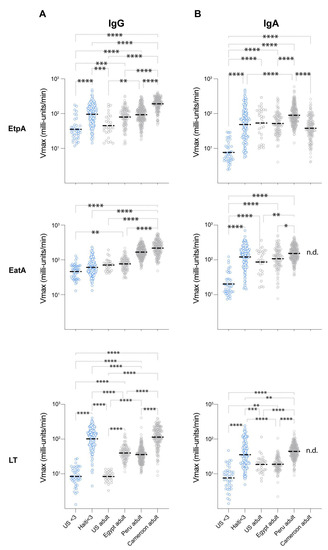
Figure 1
Open AccessReview
Considerations of COVID-19 in Ophthalmology
by
, , , , and
Microorganisms 2023, 11(9), 2220; https://doi.org/10.3390/microorganisms11092220 (registering DOI) - 31 Aug 2023
Abstract
Since its emergence in early 2020, the SARS-CoV-2 infection has had a significant impact on the entire eye care system. Ophthalmologists have been categorized as a high-risk group for contracting the virus due to the belief that the eye may be a site
[...] Read more.
Since its emergence in early 2020, the SARS-CoV-2 infection has had a significant impact on the entire eye care system. Ophthalmologists have been categorized as a high-risk group for contracting the virus due to the belief that the eye may be a site of inoculation and transmission of the SARS-CoV-2 infection. As a result, clinical ophthalmologists, optometrists, and eyecare professionals have had to familiarize themselves with the ocular manifestations of COVID-19, as well as its treatments and vaccines. The implementation of measures to prevent the transmission of the virus, such as restrictions, lockdowns, telemedicine, and artificial intelligence (AI), have led to substantial and potentially irreversible changes in routine clinical practice, education, and research. This has resulted in the emergence of a new mode of managing patients in a routine clinical setting. This brief review aims to provide an overview of various aspects of COVID-19 in ophthalmology, including the ocular manifestations related to the disease, the modes of transmission of SARS-CoV-2 infection, precautions taken in ophthalmic practice to prevent the spread of the virus, drugs, and vaccines used in the treatment of COVID-19, the impact of the pandemic on patients, clinicians, and the eye care system as a whole, and the future of ophthalmology conditioned by this global pandemic experience.
Full article
(This article belongs to the Special Issue Latest Review Papers in Virology 2023)
Open AccessReview
Review: Effect of Experimental Diets on the Microbiome of Productive Animals
by
, , , , , , , , and
Microorganisms 2023, 11(9), 2219; https://doi.org/10.3390/microorganisms11092219 (registering DOI) - 31 Aug 2023
Abstract
The microorganisms that inhabit the gastrointestinal tract are responsible for multiple chains of reactions that affect their environment and modify the internal metabolism, their study receives the name of microbiome, which has become more relevant in recent years. In the near future, the
[...] Read more.
The microorganisms that inhabit the gastrointestinal tract are responsible for multiple chains of reactions that affect their environment and modify the internal metabolism, their study receives the name of microbiome, which has become more relevant in recent years. In the near future, the challenges related to feeding are anticipated to escalate, encompassing the nutritional needs to sustain an overpopulated world. Therefore, it is expected that a better understanding of the interactions between microorganisms within the digestive tract will allow their modulation in order to provide an improvement in the immune system, feed efficiency or the promotion of nutritional characteristics in production animals, among others. In the present study, the main effects of experimental diets in production animals were described, emphasizing the diversity of the bacterial populations found in response to the diets, ordering them between polygastric and monogastric animals, and then describing the experimental diets used and their effect on the microorganisms. It is hoped that this study will help as a first general approach to the study of the role of the microbiome in production animals under different diets.
Full article
(This article belongs to the Special Issue Animal Diets: Determinants of Gastrointestinal Microbiota Composition in Animals)
►▼
Show Figures
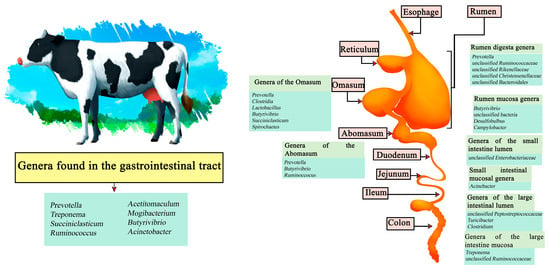
Figure 1
Open AccessReview
A Comprehensive Review for the Surveillance of Human Pathogenic Microorganisms in Shellfish
Microorganisms 2023, 11(9), 2218; https://doi.org/10.3390/microorganisms11092218 (registering DOI) - 31 Aug 2023
Abstract
Bivalve molluscan shellfish have been consumed for centuries. Being filter feeders, they may bioaccumulate some microorganisms present in coastal water, either naturally or through the discharge of human or animal sewage. Despite regulations set up to avoid microbiological contamination in shellfish, human outbreaks
[...] Read more.
Bivalve molluscan shellfish have been consumed for centuries. Being filter feeders, they may bioaccumulate some microorganisms present in coastal water, either naturally or through the discharge of human or animal sewage. Despite regulations set up to avoid microbiological contamination in shellfish, human outbreaks still occur. After providing an overview showing their implication in disease, this review aims to highlight the diversity of the bacteria or enteric viruses detected in shellfish species, including emerging pathogens. After a critical discussion of the available methods and their limitations, we address the interest of technological developments using genomics to anticipate the emergence of pathogens. In the coming years, further research needs to be performed and methods need to be developed in order to design the future of surveillance and to help risk assessment studies, with the ultimate objective of protecting consumers and enhancing the microbial safety of bivalve molluscan shellfish as a healthy food.
Full article
(This article belongs to the Special Issue Seafood-Borne Pathogens)
►▼
Show Figures
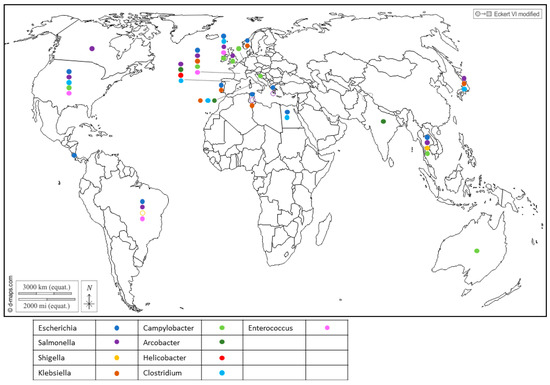
Figure 1
Open AccessReview
The Maternal Microbiome and Gestational Diabetes Mellitus: Cause and Effect
Microorganisms 2023, 11(9), 2217; https://doi.org/10.3390/microorganisms11092217 (registering DOI) - 31 Aug 2023
Abstract
Gestational diabetes mellitus (GDM) is a growing public health concern that affects many pregnancies globally. The condition is associated with adverse maternal and neonatal outcomes including gestational hypertension, preeclampsia, placental abruption, preterm birth, stillbirth, and fetal growth restriction. In the long-term, mothers and
[...] Read more.
Gestational diabetes mellitus (GDM) is a growing public health concern that affects many pregnancies globally. The condition is associated with adverse maternal and neonatal outcomes including gestational hypertension, preeclampsia, placental abruption, preterm birth, stillbirth, and fetal growth restriction. In the long-term, mothers and children have an increased risk of developing metabolic diseases such as type 2 diabetes and cardiovascular disease. Accumulating evidence suggest that alterations in the maternal microbiome may play a role in the pathogenesis of GDM and adverse pregnancy outcomes. This review describes changes in the maternal microbiome during the physiological adaptations of pregnancy, GDM and adverse maternal and neonatal outcomes. Findings from this review highlight the importance of understanding the link between the maternal microbiome and GDM. Furthermore, new therapeutic approaches to prevent or better manage GDM are discussed. Further research and clinical trials are necessary to fully realize the therapeutic potential of the maternal microbiome and translate these findings into clinical practice.
Full article
(This article belongs to the Special Issue The Role of Microorganism in Gestational Diabetes Mellitus 2.0)
►▼
Show Figures

Figure 1
Open AccessArticle
Transcriptomic Analysis of the Response of the Toxic Dinoflagellate Prorocentrum lima to Phosphorous Limitation
Microorganisms 2023, 11(9), 2216; https://doi.org/10.3390/microorganisms11092216 (registering DOI) - 31 Aug 2023
Abstract
Some dinoflagellates cause harmful algal blooms, releasing toxic secondary metabolites, to the detriment of marine ecosystems and human health. Phosphorus (P) is a limiting macronutrient for dinoflagellate growth in the ocean. Previous studies have been focused on the physiological response of dinoflagellates to
[...] Read more.
Some dinoflagellates cause harmful algal blooms, releasing toxic secondary metabolites, to the detriment of marine ecosystems and human health. Phosphorus (P) is a limiting macronutrient for dinoflagellate growth in the ocean. Previous studies have been focused on the physiological response of dinoflagellates to ambient P changes. However, the whole-genome’s molecular mechanisms are poorly understood. In this study, RNA-Seq was utilized to compare the global gene expression patterns of a marine diarrheic shellfish poisoning (DSP) toxin-producing dinoflagellate, Prorocentrum lima, grown in inorganic P-replete and P-deficient conditions. A total of 148 unigenes were significantly up-regulated, and 30 unigenes were down-regulated under 1/4 P-limited conditions, while 2708 unigenes were significantly up-regulated, and 284 unigenes were down-regulated under 1/16 P-limited conditions. KEGG enrichment analysis of the differentially expressed genes shows that genes related to ribosomal proteins, glycolysis, fatty acid biosynthesis, phagosome formation, and ubiquitin-mediated proteolysis are found to be up-regulated, while most of the genes related to photosynthesis are down-regulated. Further analysis shows that genes encoding P transporters, organic P utilization, and endocytosis are significantly up-regulated in the P-limited cells, indicating a strong ability of P. lima to utilize dissolved inorganic P as well as intracellular organic P. These transcriptomic data are further corroborated by biochemical and physiological analyses, which reveals that under P deficiency, cellular contents of starch, lipid, and toxin increase, while photosynthetic efficiency declines. Our results indicate that has P. lima evolved diverse strategies to acclimatize to low P environments. The accumulation of carbon sources and DSP toxins could provide protection for P. lima to cope with adverse environmental conditions.
Full article
(This article belongs to the Section Environmental Microbiology)
►▼
Show Figures
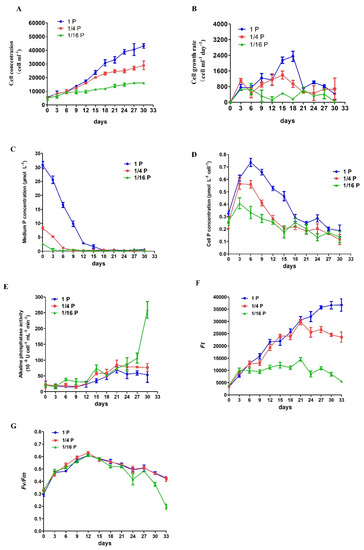
Figure 1
Open AccessReview
Bacillus amyloliquefaciens: Harnessing Its Potential for Industrial, Medical, and Agricultural Applications—A Comprehensive Review
Microorganisms 2023, 11(9), 2215; https://doi.org/10.3390/microorganisms11092215 (registering DOI) - 31 Aug 2023
Abstract
Bacillus amyloliquefaciens, a Gram-positive bacterium, has emerged as a versatile microorganism with significant applications in various fields, including industry, medicine, and agriculture. This comprehensive review aims to provide an in-depth understanding of the characteristics, genetic tools, and metabolic capabilities of B. amyloliquefaciens
[...] Read more.
Bacillus amyloliquefaciens, a Gram-positive bacterium, has emerged as a versatile microorganism with significant applications in various fields, including industry, medicine, and agriculture. This comprehensive review aims to provide an in-depth understanding of the characteristics, genetic tools, and metabolic capabilities of B. amyloliquefaciens, while highlighting its potential as a chassis cell for synthetic biology, metabolic engineering, and protein expression. We discuss the bacterium’s role in the production of chemicals, enzymes, and other industrial bioproducts, as well as its applications in medicine, such as combating infectious diseases and promoting gut health. In agriculture, B. amyloliquefaciens has demonstrated potential as a biofertilizer, biocontrol agent, and stress tolerance enhancer for various crops. Despite its numerous promising applications, B. amyloliquefaciens remains less studied than its Gram-negative counterpart, Escherichia coli. This review emphasizes the need for further research and development of advanced engineering techniques and genetic editing technologies tailored for B. amyloliquefaciens, ultimately unlocking its full potential in scientific and industrial contexts.
Full article
(This article belongs to the Special Issue Latest Review Papers in Microbial Biotechnology Section 2023)
►▼
Show Figures
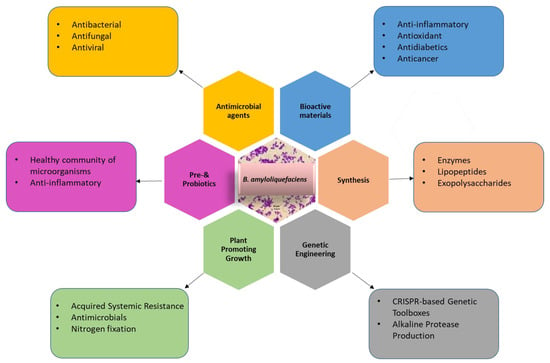
Figure 1
Open AccessReview
Understanding and Implementing Diagnostic Stewardship: A Guide for Resident Physicians in the Era of Antimicrobial Resistance
Microorganisms 2023, 11(9), 2214; https://doi.org/10.3390/microorganisms11092214 (registering DOI) - 31 Aug 2023
Abstract
Antimicrobial resistance (AMR) poses a significant global health challenge, exacerbated by the COVID-19 pandemic. Antimicrobial stewardship programs (ASPs) are crucial in managing this crisis, with diagnostic stewardship (DS) emerging as a key component. DS refers to the appropriate use of diagnostic tests to
[...] Read more.
Antimicrobial resistance (AMR) poses a significant global health challenge, exacerbated by the COVID-19 pandemic. Antimicrobial stewardship programs (ASPs) are crucial in managing this crisis, with diagnostic stewardship (DS) emerging as a key component. DS refers to the appropriate use of diagnostic tests to optimize patient outcomes, improve antimicrobial use, and combat multi-drug-resistant (MDR) organisms. Despite its potential, understanding and application of DS remain ambiguous in multiple respects, which, however, do not directly implicate the implementation of such initiatives. DS is particularly important for resident physicians who are often at the forefront of patient care and can significantly influence future AMR strategies. This review provides a comprehensive overview of DS, discussing its importance, potential challenges, and future directions. It emphasizes the need for resident physicians to understand DS principles and integrate them into their clinical practice from the beginning of their careers. The review also highlights the role of various stakeholders in implementing DS and the importance of continuous education and training. Ultimately, DS is not just a clinical tool but a philosophy of care, essential for a more responsive, humane, and effective healthcare system.
Full article
(This article belongs to the Special Issue Healthcare-Associated Infections and Antimicrobial Therapy)
►▼
Show Figures
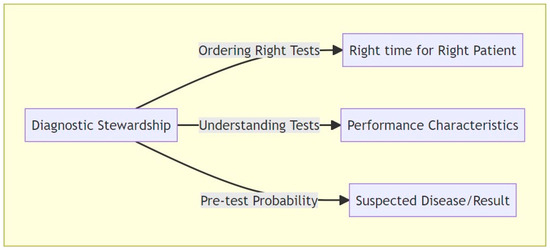
Figure 1
Open AccessArticle
Microbiological Quality and Safety of Fresh Quail Meat at the Retail Level
Microorganisms 2023, 11(9), 2213; https://doi.org/10.3390/microorganisms11092213 - 31 Aug 2023
Abstract
The objective of this study was to evaluate the microbiological quality and safety of 37 fresh quail meats. Mesophiles, Pseudomonas spp., Enterobacteriaceae, and staphylococci counts were 5.25 ± 1.14, 3.92 ± 1.17, 3.09 ± 1.02, and 2.80 ± 0.64 log CFU/g, respectively.
[...] Read more.
The objective of this study was to evaluate the microbiological quality and safety of 37 fresh quail meats. Mesophiles, Pseudomonas spp., Enterobacteriaceae, and staphylococci counts were 5.25 ± 1.14, 3.92 ± 1.17, 3.09 ± 1.02, and 2.80 ± 0.64 log CFU/g, respectively. Listeria monocytogenes was detected in seven samples (18.92%). Campylobacter jejuni was detected in one sample (2.70%). Clostridium perfringens was not detected in any sample. The dominant bacteria were Pseudomonas spp. (30.46%), Micrococcaceae (19.87%), lactic acid bacteria (14.57%), and Enterobacteriaceae (11.92%). Brochotrix thermosphacta and enterococci were isolated to a lesser extent, 7.28% and 1.99%, respectively. The dominant Enterobacteriaceae found were Escherichia coli (42.53%). ESBL-producing E. coli was detected in one sample (2.70%), showing resistance to 16 antibiotics. Sixteen different Staphylococcus spp. and three Mammaliicoccus spp. were identified, the most common being S. cohnii (19.86%) and M. sciuri (17.02%). S. aureus and S. epidermidis were also found in one and four samples, respectively. Methicillin-resistant M. sciuri and S. warneri were found in 13.51% and 10.81% of quail samples, respectively. These bacteria showed an average of 6.20 and 18.50 resistances per strain, respectively. The high resistance observed in ESBL-producing E. coli and methicillin-resistant S. warneri is of special concern. Measures should be adopted to reduce the contamination of quail meat.
Full article
(This article belongs to the Special Issue Evaluation of Risks of Microbiological Origin Associated with Food Consumption 2.0)
Open AccessArticle
Invasive Disease Due to Neisseria meningitidis: Surveillance and Trends in Israel Prior to and during the COVID-19 Pandemic
by
, , , , , , and
Microorganisms 2023, 11(9), 2212; https://doi.org/10.3390/microorganisms11092212 - 31 Aug 2023
Abstract
Invasive meningococcal disease (IMD) is a devastating disease with significant mortality and long-term morbidity. The COVID-19 pandemic and containment measures have affected the epidemiology of infectious pathogens. This study’s aim was to assess IMD trends in Israel prior to and during the COVID-19
[...] Read more.
Invasive meningococcal disease (IMD) is a devastating disease with significant mortality and long-term morbidity. The COVID-19 pandemic and containment measures have affected the epidemiology of infectious pathogens. This study’s aim was to assess IMD trends in Israel prior to and during the COVID-19 pandemic. The Neisseria meningitidis invasive infection is a notifiable disease in Israel. Laboratory analysis includes serogrouping and molecular characterization. The overall national IMD incidence rate (1998–2022) was 0.8/100,000 population. The IMD incidence rates declined during the pandemic years (0.3/100,000 in 2020–2022 vs. 0.9/100,000 in 1998–2019). The number of notified IMD cases declined by 65% in 2020–2022. The case fatality rate among laboratory-confirmed IMD cases was 9% (47/521, 2007–2022). Mortality risk markers included cases’ age (older) and socio-economic status (lower). Overall, most Neisseria meningitidis isolates were of serogroup B (62.6%), and the most prevalent clonal complex (CC) was CC32 (24.2%). Serogroup B prevailed in cases aged 0–9 years (74.5%) and less in cases aged 10 years and above (39%). Neisseria meningitidis serogroups and CC distribution altered recently with a decline in serogroup B fraction, an increase in serogroup Y, and a decline in CC32. Ongoing IMD surveillance is necessary to assess trends in circulating strains and support decision-making on meningococcal vaccination programs.
Full article
(This article belongs to the Special Issue New Insights into Epidemiology, Detection and Characterization of Bacterial Pathogens)
►▼
Show Figures
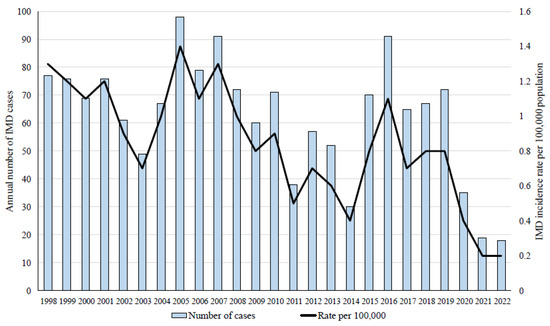
Figure 1
Open AccessArticle
Uncovering the Resistance Mechanisms in Extended-Drug-Resistant Pseudomonas aeruginosa Clinical Isolates: Insights from Gene Expression and Phenotypic Tests
by
, , , , , , , and
Microorganisms 2023, 11(9), 2211; https://doi.org/10.3390/microorganisms11092211 - 31 Aug 2023
Abstract
(1) Background: The purpose of the study was to describe the activity of mex efflux pumps in Multidrug-Resistant (MDR) clinical isolates of Pseudomonas aeruginosa and to compare the carbapenem-resistance identification tests with PCR; (2) Methods: Sixty MDR P. aeruginosa were analyzed for detection
[...] Read more.
(1) Background: The purpose of the study was to describe the activity of mex efflux pumps in Multidrug-Resistant (MDR) clinical isolates of Pseudomonas aeruginosa and to compare the carbapenem-resistance identification tests with PCR; (2) Methods: Sixty MDR P. aeruginosa were analyzed for detection of carbapenemase by disk diffusion inhibitory method, carbapenem inactivation method and Modified Hodge Test. Endpoint PCR was used to detect 7 carbapenemase genes (blaKPC, blaOXA48-like, blaNDM, blaGES-2, blaSPM, blaIMP, blaVIM) and mcr-1 for colistin resistance. The expression of mexA, mexB, mexC, mexE and mexX genes corresponding to the four main efflux pumps was also evaluated; (3) Results: From the tested strains, 71.66% presented at least one carbapenemase gene, with blaGES-2 as the most occurring gene (63.3%). Compared with the PCR, the accuracy of phenotypic tests did not exceed 25% for P. aeruginosa. The efflux pump genes were present in all strains except one. In 85% of the isolates, an overactivity of mexA, mexB and mostly mexC was detected. Previous treatment with ceftriaxone increased the activity of mexC by more than 160 times; (4) Conclusions: In our MDR P. aeruginosa clinical isolates, the carbapenem resistance is not accurately detected by phenotypic tests, due to the overexpression of mex efflux pumps and in a lesser amount, due to carbapenemase production.
Full article
(This article belongs to the Special Issue Advances in Antibiotic and Drug-Resistance Mechanisms)
►▼
Show Figures

Figure 1
Open AccessArticle
Nitric Oxide Detection Using a Chemical Trap Method for Applications in Bacterial Systems
by
, , , , , , , and
Microorganisms 2023, 11(9), 2210; https://doi.org/10.3390/microorganisms11092210 - 31 Aug 2023
Abstract
Plant growth-promoting bacteria (PGPB) can be incorporated in biofertilizer formulations, which promote plant growth in different ways, such as fixing nitrogen and producing phytohormones and nitric oxide (NO). NO is a free radical involved in the growth and defense responses of plants and
[...] Read more.
Plant growth-promoting bacteria (PGPB) can be incorporated in biofertilizer formulations, which promote plant growth in different ways, such as fixing nitrogen and producing phytohormones and nitric oxide (NO). NO is a free radical involved in the growth and defense responses of plants and bacteria. NO detection is vital for further investigation in different agronomically important bacteria. NO production in the presence of KNO3 was evaluated over 1–3 days using eight bacterial strains, quantified by the usual Griess reaction, and monitored by 2,3-diaminonaphthalene (DAN), yielding 2,3-naphthotriazole (NAT), as analyzed by fluorescence spectroscopy, gas chromatography–mass spectrometry, and high-performance liquid chromatography. The Greiss and trapping reaction results showed that Azospirillum brasilense (HM053 and FP2), Rhizobium tropici (Br322), and Gluconacetobacter diazotrophicus (Pal 5) produced the highest NO levels 24 h after inoculation, whereas Nitrospirillum amazonense (Y2) and Herbaspirillum seropedicae (SmR1) showed no NO production. In contrast to the literature, in NFbHP–NH4Cl–lactate culture medium with KNO3, NO trapping led to the recovery of a product with a molecular mass ion of 182 Da, namely, 1,2,3,4-naphthotetrazole (NTT), which contained one more nitrogen atom than the usual NAT product with 169 Da. This strategy allows monitoring and tracking NO production in potential biofertilizing bacteria, providing future opportunities to better understand the mechanisms of bacteria–plant interaction and also to manipulate the amount of NO that will sustain the PGPB.
Full article
(This article belongs to the Section Microbial Biotechnology)
►▼
Show Figures
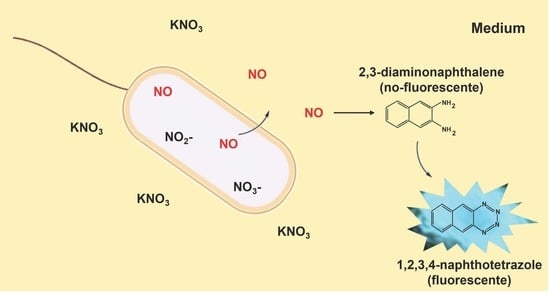
Graphical abstract
Open AccessBrief Report
Using Cryopreserved Plasmodium falciparum Sporozoites in a Humanized Mouse Model to Study Early Malaria Infection Processes and Test Prophylactic Treatments
Microorganisms 2023, 11(9), 2209; https://doi.org/10.3390/microorganisms11092209 - 31 Aug 2023
Abstract
In addition to vector control, long-lasting insecticidal nets and case management, the prevention of infection through vaccination and/or chemoprevention are playing an increasing role in the drive to eradicate malaria. These preventative approaches represent opportunities for improvement: new drugs may be discovered that
[...] Read more.
In addition to vector control, long-lasting insecticidal nets and case management, the prevention of infection through vaccination and/or chemoprevention are playing an increasing role in the drive to eradicate malaria. These preventative approaches represent opportunities for improvement: new drugs may be discovered that target the early infectious stages of the Plasmodium parasite in the liver (rather than the symptomatic, abundant blood stage), and new, exciting vaccination technologies have recently been validated (using mRNA or novel adjuvants). Exploiting these possibilities requires the availability of humanized mouse models that support P. falciparum infection yet avoid the hazardous use of infectious mosquitoes. Here, we show that commercially available P. falciparum sporozoites and FRG mice carrying human hepatocytes and red blood cells faithfully recapitulate the early human malaria disease process, presenting an opportunity to use this model for the evaluation of prophylactic treatments with a novel mode of action.
Full article
(This article belongs to the Special Issue Humanised Mouse Models: Recent Advances in Human Infectious Diseases)
►▼
Show Figures

Figure 1
Open AccessArticle
Propylene Glycol Potentiates the Inhibitory Action of CTZ Paste on Antibiotic-Resistant Enterococcus faecalis Isolated from the Root Canal: An In Vitro Study
by
, , , , , , , , and
Microorganisms 2023, 11(9), 2208; https://doi.org/10.3390/microorganisms11092208 - 31 Aug 2023
Abstract
This study aimed to evaluate if the change of vehicle for CTZ (Chloramphenicol, Tetracycline, zinc oxide, and Eugenol) paste improves the inhibition of Enterococcus faecalis in vitro. The vehicles evaluated alone and mixed with CTZ were Eugenol, propylene glycol (PG), super-oxidized solution (SOS),
[...] Read more.
This study aimed to evaluate if the change of vehicle for CTZ (Chloramphenicol, Tetracycline, zinc oxide, and Eugenol) paste improves the inhibition of Enterococcus faecalis in vitro. The vehicles evaluated alone and mixed with CTZ were Eugenol, propylene glycol (PG), super-oxidized solution (SOS), grapefruit-seed extract (GSE), and 0.9% saline solution as a negative control. A clinical isolate of E. faecalis was morphologically and biochemically characterized, and its antimicrobial susceptibility was tested using 20 antimicrobial agents. Once characterized, the clinical isolate was cultivated to perform the Kirby–Bauer disc diffusion method with paper discs embedded with the different vehicles mixed or used alone, and incubated at 37 °C for 24 h. Data were analyzed using one-way ANOVA, and the means were compared using Tukey test with a significance level of p < 0.05. For vehicles used alone, GSE presented the greatest inhibition showing a statistically significant difference with the rest of the vehicles. When vehicles were mixed with the CTZ paste, PG showed a greater inhibition with a statistically significant difference from the rest of the vehicles. In conclusion, the vehicle used to mix the CTZ paste plays an important role in the inhibition of E. faecalis in vitro; therefore, we consider that this can be an important factor to achieve success in the use of this technique.
Full article
(This article belongs to the Special Issue Biopathology of Microbial Infections 2.0)
►▼
Show Figures
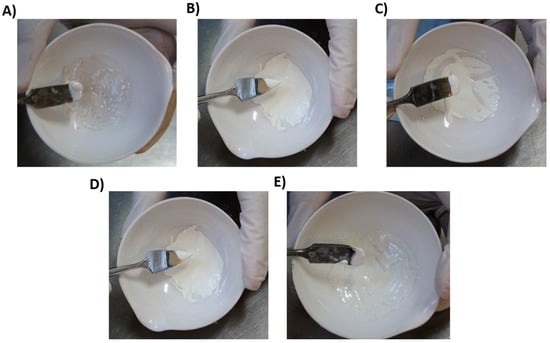
Figure 1
Open AccessArticle
The Impact of the Soil Survival of the Pathogen of Fusarium Wilt on Soil Nutrient Cycling Mediated by Microorganisms
Microorganisms 2023, 11(9), 2207; https://doi.org/10.3390/microorganisms11092207 - 31 Aug 2023
Abstract
Fusarium wilt of Momordica charantia in the greenhouse is one of the most severe crop diseases in Shandong Province, P.R. China. This study aimed to investigate the mechanisms of accumulation and long-term survival of the pathogen in naturally pathogenic soils. Soil physicochemical properties
[...] Read more.
Fusarium wilt of Momordica charantia in the greenhouse is one of the most severe crop diseases in Shandong Province, P.R. China. This study aimed to investigate the mechanisms of accumulation and long-term survival of the pathogen in naturally pathogenic soils. Soil physicochemical properties were tested after applying a highly virulent strain of Fusarium wilt to M. charantia in an artificial disease nursery. The functional structure of soil microorganisms was analyzed through amplicon sequencing. The highly virulent strain SG−15 of F. oxysporum f. sp. momordicae was found to cause Fusarium wilt in M. charantia in Shandong Province. The strain SG−15 could not infect 14 non-host crops, including Solanum melongena and Lycopersicon esculentum, but it had varying degrees of pathogenicity towards 11 M. charantia varieties. In the artificial disease nursery for Fusarium wilt of M. charantia, the F. oxysporum was distributed in the soil to a depth of 0–40 cm and was mainly distributed in crop residues at 0–10 cm depth. During crop growth, F. oxysporum primarily grows and reproduces in susceptible host plants, rather than disease-resistant hosts and non-host crops. The colonization of the pathogen of Fusarium wilt significantly changed the soil physicochemical properties, the functional structure of soil microorganisms and the circulation of soil elements such as carbon, nitrogen, phosphorus and sulfur. Soil pH value, organic matter content, available iron content, available manganese content, FDA hydrolase activity and polyphenol oxidase activity were significantly correlated with the relative abundance of Fusarium wilt pathogens in the soil. In general, this study suggests that susceptible host plants facilitate the accumulation of Fusarium wilt pathogens in the soil. These pathogens can mediate the decomposition process of plant residues, particularly those of diseased plants, and indirectly or directly affect soil’s chemical properties.
Full article
(This article belongs to the Special Issue Plant-Pathogenic Fungi)
►▼
Show Figures
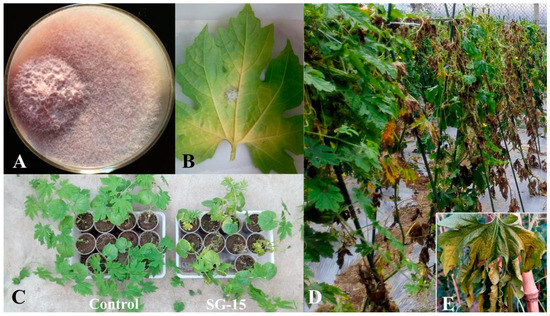
Figure 1
Open AccessReview
The Impact of Stress, Microbial Dysbiosis, and Inflammation on Necrotizing Enterocolitis
Microorganisms 2023, 11(9), 2206; https://doi.org/10.3390/microorganisms11092206 - 31 Aug 2023
Abstract
Necrotizing enterocolitis (NEC) is the leading cause of intestinal morbidity and mortality in neonates. A large body of work exists; however, the pathogenesis of NEC remains poorly understood. Numerous predictors have been implicated in the development of NEC, with relatively less emphasis on
[...] Read more.
Necrotizing enterocolitis (NEC) is the leading cause of intestinal morbidity and mortality in neonates. A large body of work exists; however, the pathogenesis of NEC remains poorly understood. Numerous predictors have been implicated in the development of NEC, with relatively less emphasis on maternal factors. Utilizing human tissue plays a crucial role in enhancing our comprehension of the underlying mechanisms accountable for this devastating disease. In this review, we will discuss how maternal stress affects the pathogenesis of NEC and how changes in the intestinal microbiome can influence the development of NEC. We will also discuss the results of transcriptomics-based studies and analyze the gene expression changes in NEC tissues and other molecular targets associated with the pathogenesis of NEC.
Full article
(This article belongs to the Special Issue Neonatal Microbiome, Intestinal Inflammation, and Necrotizing Enterocolitis (NEC))
Open AccessArticle
LPS-Induced Mortality in Zebrafish: Preliminary Characterisation of Common Fish Pathogens
by
, , , , , , , , , and
Microorganisms 2023, 11(9), 2205; https://doi.org/10.3390/microorganisms11092205 - 31 Aug 2023
Abstract
Disease outbreaks are a common problem in aquaculture, with serious economic consequences to the sector. Some of the most important bacterial diseases affecting aquaculture are caused by Gram-negative bacteria including Vibrio spp. (vibriosis), Photobacterium damselae (photobacteriosis), Aeromonas spp. (furunculosis; haemorrhagic septicaemia) or Tenacibaculum
[...] Read more.
Disease outbreaks are a common problem in aquaculture, with serious economic consequences to the sector. Some of the most important bacterial diseases affecting aquaculture are caused by Gram-negative bacteria including Vibrio spp. (vibriosis), Photobacterium damselae (photobacteriosis), Aeromonas spp. (furunculosis; haemorrhagic septicaemia) or Tenacibaculum maritimum (tenacibaculosis). Lipopolysaccharides (LPS) are important components of the outer membrane of Gram-negative bacteria and have been linked to strong immunogenic responses in terrestrial vertebrates, playing a role in disease development. To evaluate LPS effects in fish, we used a hot-phenol procedure to extract LPS from common fish pathogens. A. hydrophila, V. harveyi, T. maritimum and P. damselae purified LPS were tested at different concentrations (50, 100, 250 and 500 µg mL−1) at 3 days post-fertilisation (dpf) Danio rerio larvae, for 5 days. While P. damselae LPS did not cause any mortality under all concentrations tested, A. hydrophila LPS induced 15.5% and V. harveyi LPS induced 58.3% of zebrafish larvae mortality at 500 µg mL−1. LPS from T. maritimum was revealed to be the deadliest, with a zebrafish larvae mortality percentage of 80.6%. Analysis of LPS separated by gel electrophoresis revealed differences in the overall LPS structure between the bacterial species analysed that might be the basis for the different mortalities observed.
Full article
(This article belongs to the Special Issue Microorganisms and Diseases Associated with Aquatic Animals)
►▼
Show Figures
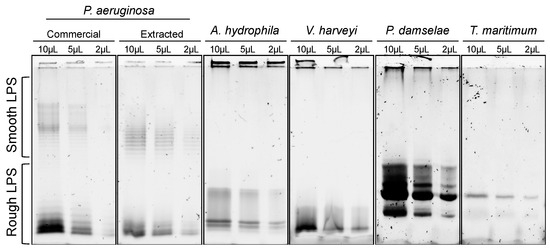
Figure 1

Journal Menu
► ▼ Journal Menu-
- Microorganisms Home
- Aims & Scope
- Editorial Board
- Reviewer Board
- Topical Advisory Panel
- Instructions for Authors
- Special Issues
- Topics
- Sections & Collections
- Article Processing Charge
- Indexing & Archiving
- Editor’s Choice Articles
- Most Cited & Viewed
- Journal Statistics
- Journal History
- Journal Awards
- Society Collaborations
- Conferences
- Editorial Office
- 10th Anniversary of Microorganisms
Journal Browser
► ▼ Journal BrowserHighly Accessed Articles
Latest Books
E-Mail Alert
News
Topics
Topic in
Agronomy, Diversity, Ecologies, Microorganisms, Plants
Plant-Associated Microbiota: From the Assembly to the Function
Topic Editors: Alessandra Salvioli Di Fossalunga, Vincenza CozzolinoDeadline: 30 September 2023
Topic in
Forests, Microorganisms, Sustainability
Climate and Substrate Control on Decomposition across Temperate and Tropical Forests
Topic Editors: Xiaoming Zou, Honghua RuanDeadline: 1 November 2023
Topic in
Agriculture, Beverages, Foods, Microorganisms, Toxins
Emerging Food Safety Issues Associated with Mycotoxins
Topic Editors: Wayne L. Bryden, Naresh MaganDeadline: 1 December 2023
Topic in
Antibiotics, Biomedicines, Microorganisms, Parasitologia, Pathogens, Vaccines
Advances in Vaccines and Antimicrobial Therapy
Topic Editors: Roberto Paganelli, Raffaele D’AmelioDeadline: 30 December 2023

Conferences
Special Issues
Special Issue in
Microorganisms
Advances in Antibiotic and Drug-Resistance Mechanisms
Guest Editors: Thierry Naas, Laura DabosDeadline: 1 September 2023
Special Issue in
Microorganisms
Characterisation and Molecular Analysis of Staphylococcal Species: Their Impact on Colonization and Infection
Guest Editors: Minh-Thu Nguyen, Silke NiemannDeadline: 15 September 2023
Special Issue in
Microorganisms
Virulence Genes, Antimicrobial Resistance Profiles and Genetic Diversity of Escherichia coliGuest Editors: Steven. P. Djordjevic, Veronica JarockiDeadline: 30 September 2023
Special Issue in
Microorganisms
Bacteriophage Genomics 2.0
Guest Editor: Igor V. BabkinDeadline: 20 October 2023
Topical Collections
Topical Collection in
Microorganisms
Microbial Life in Extreme Environments
Collection Editor: Ricardo Amils
Topical Collection in
Microorganisms
Biodegradation and Environmental Microbiomes
Collection Editors: Shuangjiang Liu, Hongzhi Tang, Jiandong Jiang, Xiaolei Wu




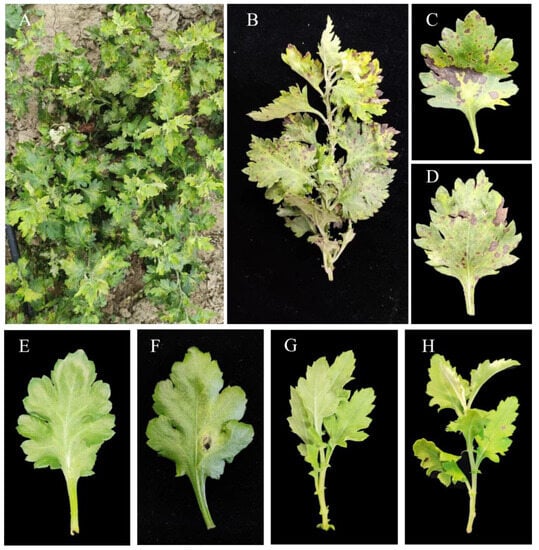





.jpg)


